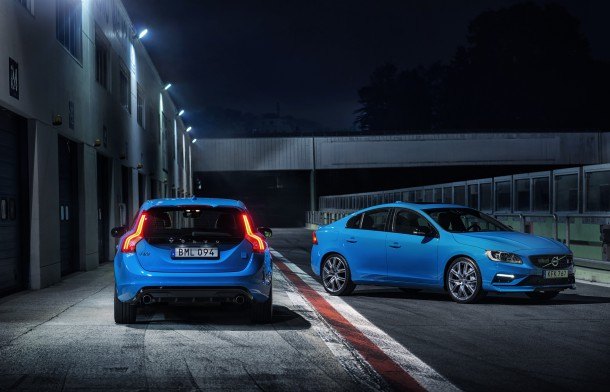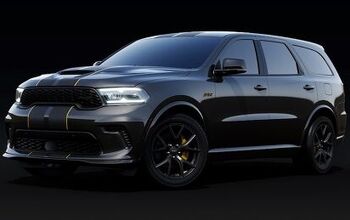Polestar Pinnacle: Volvo Launches Its Quickest Models Ever

Volvo set a corporate high-water mark for speed today by launching two new Polestar models, each with enough power to make a tenured Vermont professor blush.
Dropping two cylinders while gaining 22 horsepower, the upgraded S60 and V60 Polestars are part of Volvo’s effort to boost the visibility of its performance division.
The 2.0-liter Drive-E four-cylinder in the S60 and V60 Polestar (replacing the previous blown straight six) was worked over by Polestar engineers to make 367 horsepower and 347 pounds-feet of torque. The mill, which makes 240 horsepower in T5 models, gains muscle from a supercharger, larger turbocharger and air intake, and a higher-capacity fuel pump.
Using typical Scandinavian understatement, Polestar Chief Operating Officer Niels Möller called the cars “properly quick.” In reality, they’re the fastest production Volvos ever, making the run to 100 kilometers per hour (62 miles per hour) in 4.7 seconds.
Volvo wants to flog the Polestar brand heavily in growing markets, and will be making the S60 and V60 Polestar in slightly larger numbers to back up that goal. At 1,500 units per year, it’s still a low-volume offering, but it’s better than the trickle that emerged after the first Polestar model went on sale in 2014.
Polestar Performance Parts recently became available on all Volvo models.
Volvo isn’t saying how many Polestars will be coming to North America, but there stands to be plenty of new buyers competing for those 1,500 units. As part of its growth strategy, Volvo will make Polestars available in 47 markets, up from 13.
Earlier this week, Volvo scored a PR coup when its V60 Polestar nabbed the safety car gig at future FIA World Touring Car Championship races.
[Images: Volvo Car Corporation]

More by Steph Willems
Latest Car Reviews
Read moreLatest Product Reviews
Read moreRecent Comments
- VoGhost Matt, I'm curious why you write that inventory levels are low at 74 days. Typically, 60 days is the benchmark for normal inventory.
- Jeff Arthur Dailey--If you really want to see a similarity between Chevy and Cadillac look at the 71 Chevy Caprice compared to the 71 Cadillac Deville more similar in looks than the 61s. Motor Trend even had an article comparing them and stating that you could buy a comparably equipped 71 Caprice and save thousands. The 1971 Chevrolet Caprice/Impala: Value-Priced, Cadillac ... YouTube · Rare Classic Cars & Automotive History 16 minutes, 53 seconds Feb 3, 2024
- Buickman mostly cut and paste information. where is Jack Baruth when you need him?
- ToolGuy In a perfect world (we don't have that), and a stable world (also no), one might expect the used EV pricing curve to follow the new EV pricing curve but with a lag. Overall that might be sort of what we are seeing but I will have to noodle on it more. (I know you can't wait.)
- ToolGuy Ok after listening to the podcast (and re-listening to the relevant part while doing a painting job in the hot sun, won't make any significant pronouncements at this point) I was curious about the methodology. ¶ Here you go: "Methodology iSeeCars analyzed over 2.2 million 1- to 5-year-old used cars sold in May 2023 and 2024. The average listing prices of each car model were compared between the two time periods, and the differences were expressed as both a percentage difference from the 2023 price as well as a dollar difference. Heavy-duty vehicles, low-volume vehicles, vehicles discontinued as of the 2023 model year, and vehicles in production for fewer than four of the last five model years for each period were excluded from further analysis." ¶ So for any specific model, you have age and mileage and condition factoring in (think of the volume curve for 'new' models over the past 5 years). ¶ The overall averages have a -lot- of model mix going on. ¶ Random question: is the 'listing price' the listing price (likely) or the actual transaction price? (It matters if the listing prices were too optimistic a year ago, i.e., some of the 'drop' would represent more realism in the listing prices.)


































Comments
Join the conversation
Seems like a college design project, how far can we push this tiny hamster mill. Just give it a proper engine
Oh. It's most certainly NOT anything that Audi or BMW or Daimler-Benz would do. Not at all. ((rolls eyes)) Full disclosure: Volvo owner.